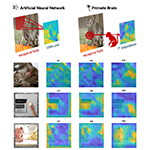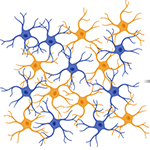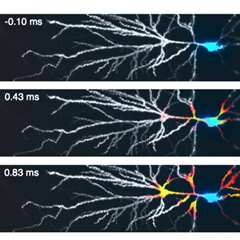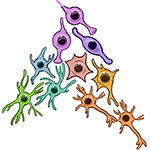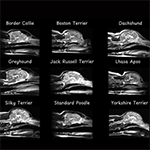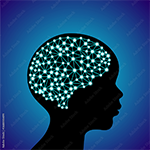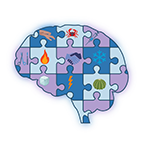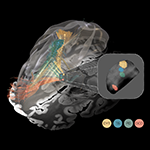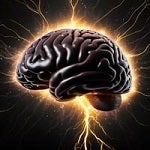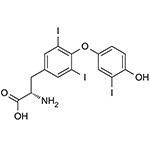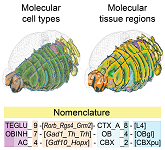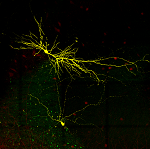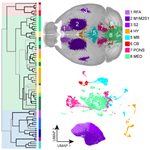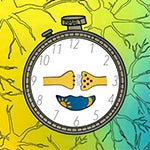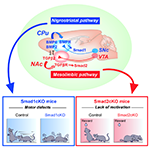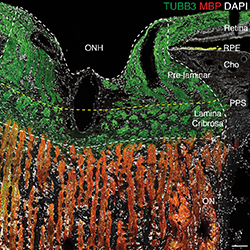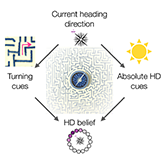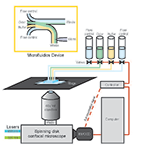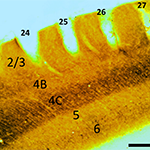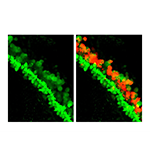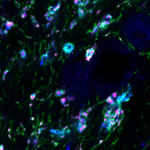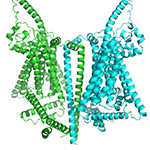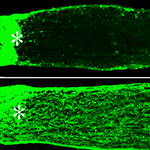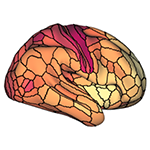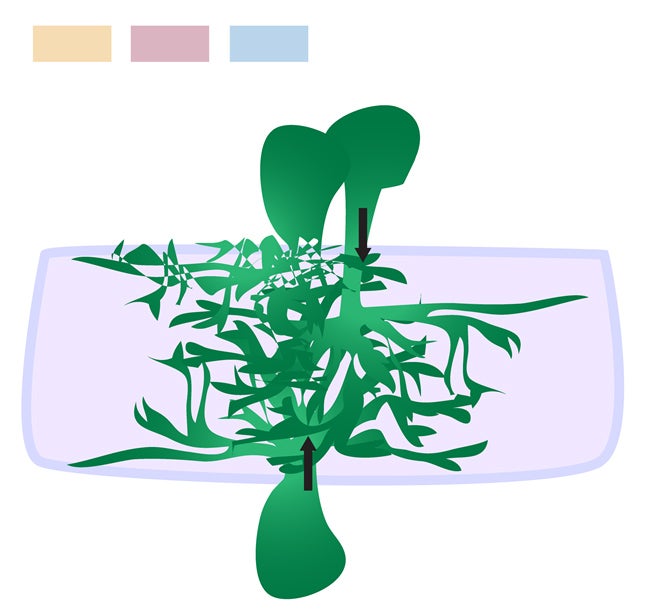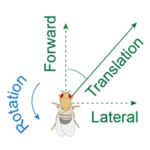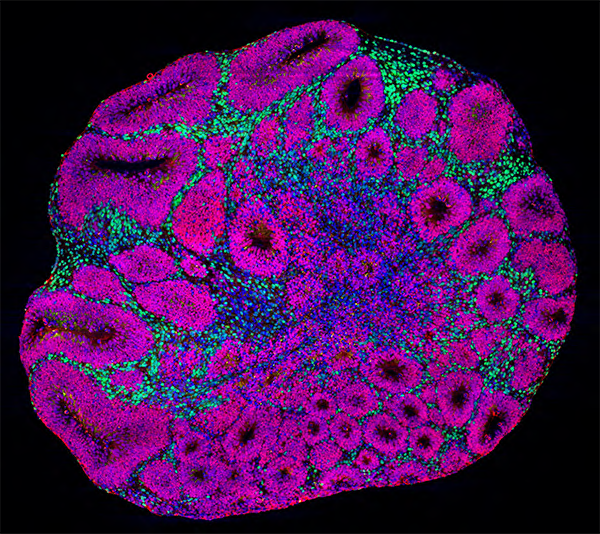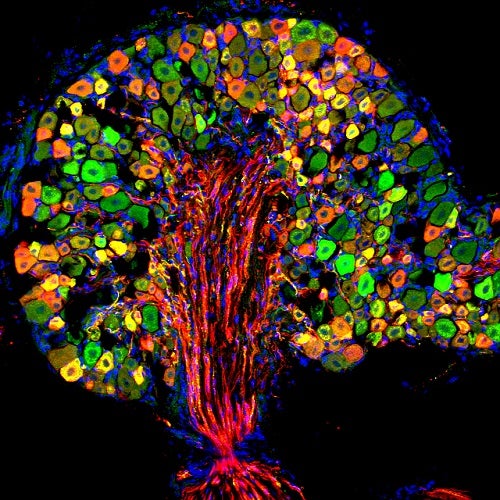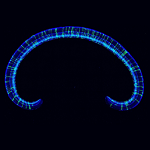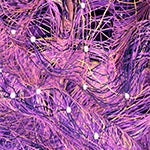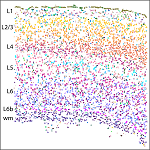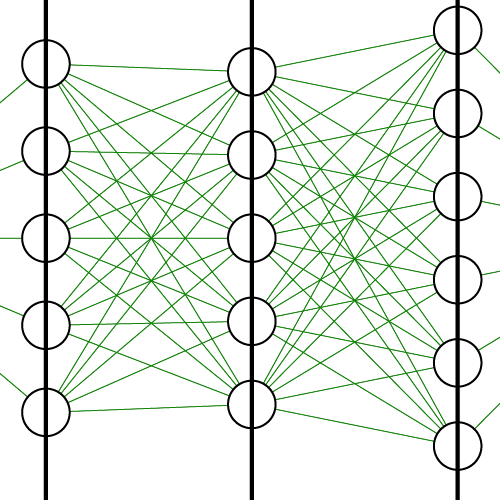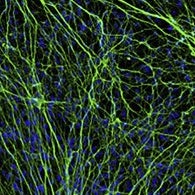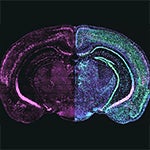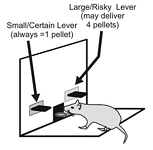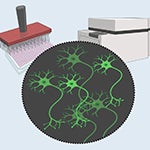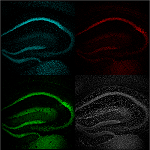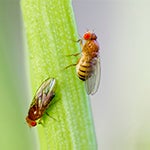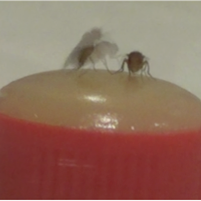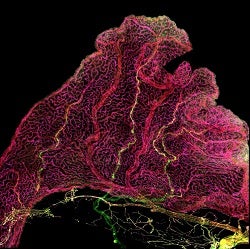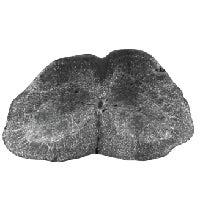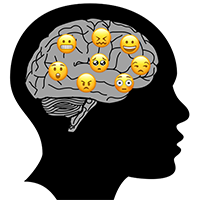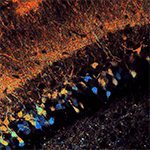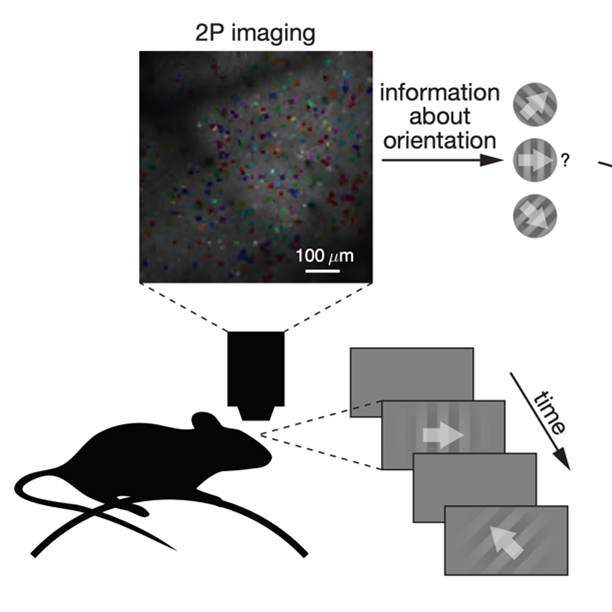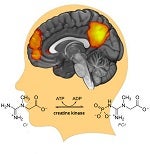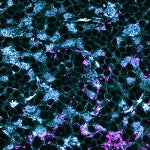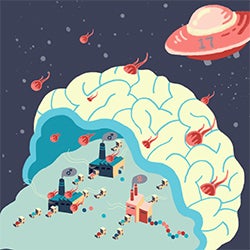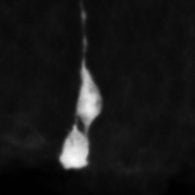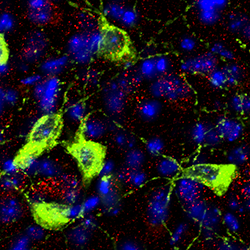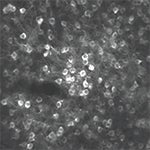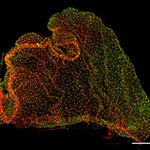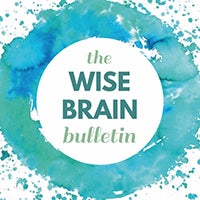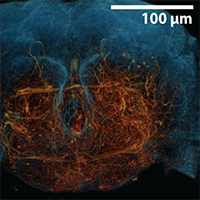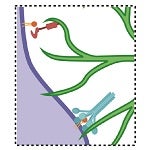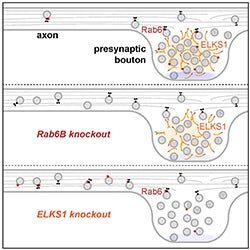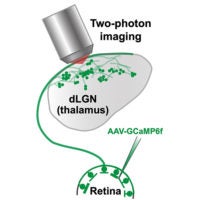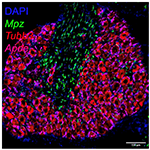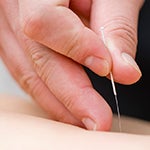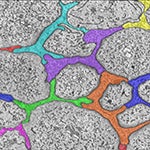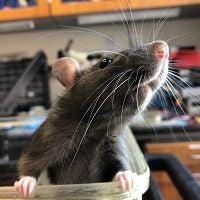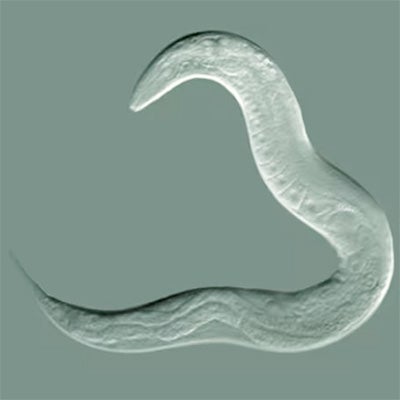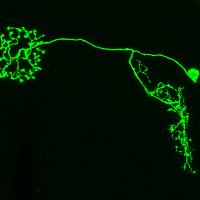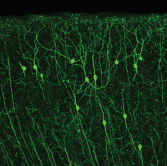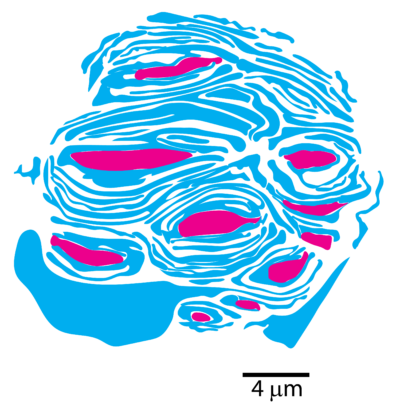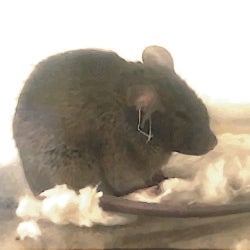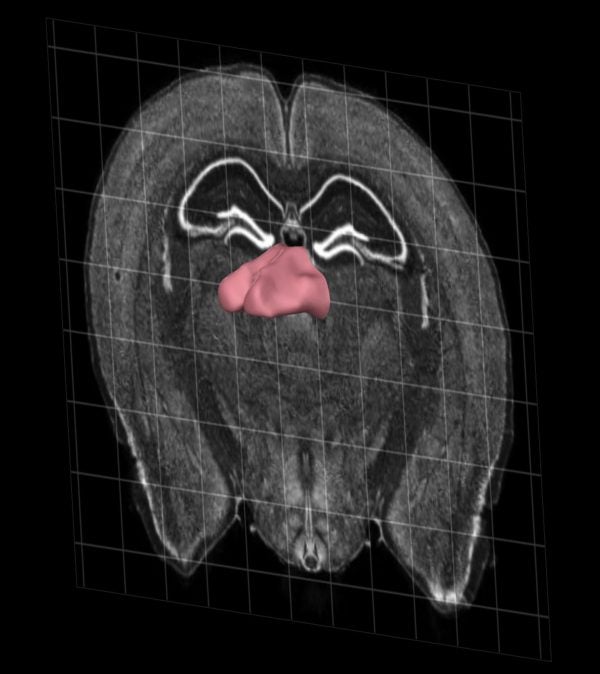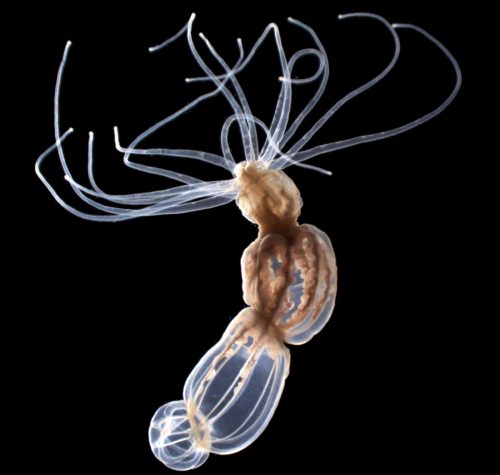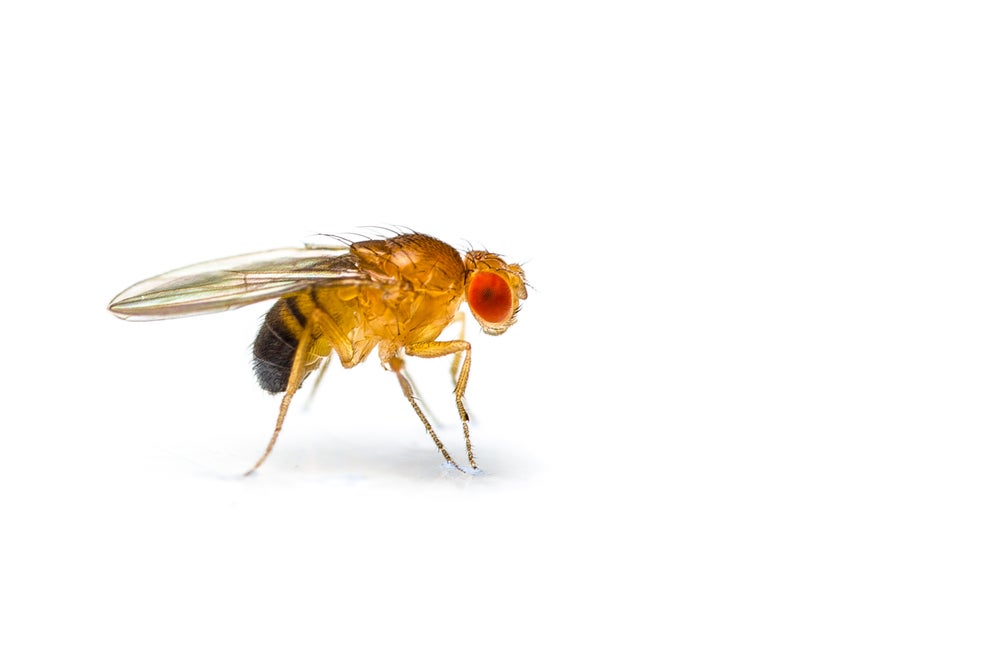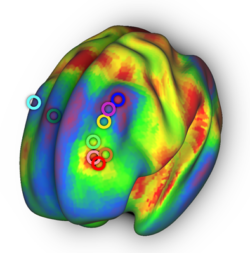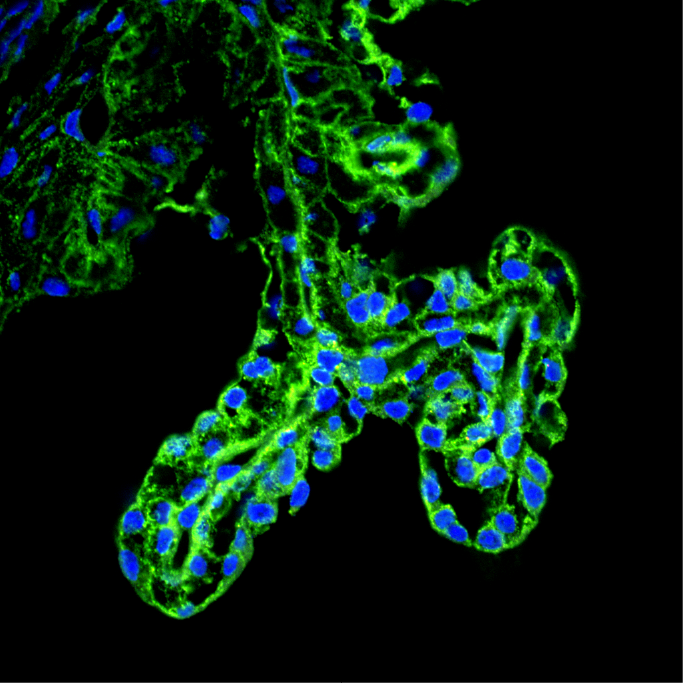June 30, 2025
How does the brain really see? In a new study, Victoria Zhanqi Zhang and the Ponce Lab reveal that neurons across the primate visual cortex are tuned not just to objects, but to animal features—highlighting a surprising bias in how the brain encodes natural scenes. Their findings shed light on the fundamental principles of visual representation.
June 16, 2025
It was long thought that only neurons in the outermost regions of the brain, called the cortex, could adapt and change their properties in response to visual experience. Takuma Sonoda and Chinfei Chen share new findings revealing that the visual thalamus, a structure in the center of the brain, at an earlier stage in the visual pathway than the cortex, can also change based on what animals see. Their discovery expands our understanding of how sensory systems learn and adapt.
May 21, 2025
For many years, researchers have debated whether language in humans emerged through the evolution of gestural communication or vocal communication. Erin Hecht shares new data from chimpanzee research supporting a model where both modalities together contributed.
May 14, 2025
Cagri Yuksel describes new research revealing that REM sleep and vagal nerve activity may play a crucial role in how the brain recovers from fear. These findings could open the door to innovative therapies for PTSD and related conditions.
March 21, 2025
Have you ever had the sense that the person you’re talking to is just a “robot”? That they’re following some script without thinking about it? New research by Ilona Bass and Tomer Ullman examines the detection of automatic behavior in other people, finding it is a common and robust phenomenon across domains.
March 21, 2025
Neurons receive synaptic inputs all along their dendrites. Dendrites can produce electrical spikes, independent of the cell body. What are these excitations for? Park, Wong-Campos, and Cohen mapped the voltage throughout the dendrites of neurons and found that dendritic excitations were mostly triggered by specific patterns of spiking at the cell body – suggesting that the dendritic excitations play an important role in regulating synaptic plasticity.
February 21, 2025
Haritosh Patel and colleagues explore how nature’s blueprint for smell can inspire next-generation gas sensors. By applying principles from biological olfaction—such as active sniffing, adaptive sensing, and neural-inspired processing—this work presents a new perspective for more sensitive, selective, and robust electronic noses with applications in healthcare, environmental monitoring, and beyond.
January 13, 2025
Jakob Hartmann and Kerry Ressler share new work uncovering how SKA2, a protein regulating stress-related signaling, interacts with the glucocorticoid receptor to maintain balance in the brain’s stress response. By highlighting altered SKA2 expression in bipolar disorder, this work offers new insights into the molecular underpinnings of stress-related psychiatric conditions and potential pathways for therapeutic intervention.
January 2, 2025
How do pediatric brain tumors mimic normal brain development, and how can this be leveraged for therapies? Ilon Liu, Mariella Filbin and colleagues find that a specific brain tumor type resembles GABAergic interneuron development, and with this knowledge they identify novel targets against this lethal tumor.
December 10, 2024
Sophie Barton shares new research investigating how humans may have unwittingly altered the brain morphology of domestic dogs through selective breeding for head shape. Dogs with extreme head shapes show widespread reductions in gray matter volume across the brain.
November 18, 2024
Brain regions that preferentially process faces, places, and words may emerge naturally from exposure to diverse images, without requiring built-in structures dedicated to specific categories. By training AI models to distinguish images based on visual differences alone, researchers found that brain-aligned category-selective neurons emerged spontaneously in the model.
November 4, 2024
How often do we sense vibration? More than you might think. New work from Josef Turecek & David Ginty reveals how mechanosensory neurons are activated during movement and exploration.
October 10, 2024
Clifford Woolf shares a perspectives piece about what scientists can learn from the opioid crisis as they develop new pain treatments. The piece is part of a special Nature Outlook edition on pain.
September 9, 2024
Tari Tan shares an article she has written in the Journal of Undergraduate Neuroscience Education together with colleagues from three other institutions, providing a general overview of the neuroscience PhD admissions landscape, followed by a deeper dive into two specific examples, at the University of Illinois Urbana-Champaign and Harvard and discussion of training programs that increase participation and diversity in neuroscience.
August 27, 2024
A lot is unknown about how brain circuits develop and mature in babies and toddlers. Carol Wilkinson shares new data on developmental trajectories of EEG activity from 0-3 years—revealing age-dependent, nonlinear changes in periodic alpha and beta brain waves that are suggestive of distinct milestones in circuit maturation.
August 1, 2024
Complement proteins are known to mediate the pruning of synapses by microglia. In new work with implications for our understanding of schizophrenia, Krishna K. Narayanan, Matthew L Baum, Matthew Johnson, and Beth Stevens, and colleagues at Boston Children's Hospital, find that a neuronal protein called CSDM1 opposes the deposition of complement proteins on synapses, making them less vulnerable to engulfment by microglia.
May 9, 2024
We know that the cerebral cortex is vital for the perception of our somatosensory environment. Yet much remains mysterious. How do we know when something is too hot and what sets that thermostat? Daniel G. Taub and Clifford J. Woolf explain how a specific region called the secondary somatosensory cortex can alter our somatosensory sensitivity.
April 24, 2024
A hallmark of anorexia nervosa is the willful seeking and maintenance of a starvation state, potentially as a means to cope with stressful life experiences or trauma. Hakan Kucukdereli and Mark Andermann share their research on how they designed a virtual reality paradigm to study this phenomenon in mice.
April 15, 2024
Deep brain stimulation is a powerful therapeutic approach for severe brain circuit dysfunctions that can effectively alleviate the heterogeneous symptoms characteristic of Parkinson’s disease, dystonia, Tourette’s syndrome, and obsessive-compulsive disorder. Barbara Hollunder (Lab of Andreas Horn) explains what invasive brain stimulation can teach us about the circuit architecture of the brain’s dysfunction — and which commonalities it shares with a prism.
March 22, 2024
The mind can wander and uncouple from the present experience of the body, but how does it snap back into the present? Jordan Farrell shares new research that points towards a brain circuit phenomenon that may explain this shift.
March 8, 2024
Thyroid signaling plays a central role in metabolism. Ralph Lawton and Daniel Hochbaum of the Sabatini Lab share new research revealing it may regulate human behavior and other important components of health as well.
February 16, 2024
One cell, the “midget retinal ganglion cell,” carries the vast majority of visual information from the eye to the brain in humans. It has been thought to be a primate-specific innovation, making it impossible to study in accessible model systems. Josh Sanes shares how, using molecular comparison of retinas from 17 vertebrate species, researchers from his team and that of former postdoc Karthik Shekhar, were able to trace back through evolution and identify mouse orthologues of midget cells.
February 7, 2024
Yichun He and Hailing Shi share new work from labs of Jia Liu and Xiao Wang, on the creation of publicly accessible spatial atlas of the mouse brain with unprecedented level of detail—featuring an analysis of over one million individual cells that pinpointed approximately 230 unique molecular cell types and delineated 106 distinct molecular tissue regions.
February 6, 2024
Yu-Tzu Shih, Jason Alipio, and Amar Sahay share new research on the autism linked gene Dyrk1a. They find that developmental differences in neural circuitry and social cognition observed in mutant mice with only one copy of the Dyrk1a gene can be rescued by targeting inhibitory neuron plasticity in adulthood.
February 2, 2024
The brain controls nearly all bodily functions via spinal projecting neurons that carry command signals from the brain to the spinal cord. As part of a collaborative effort by the BRAIN Initiative Cell Census Network, research co-led by the Zhigang He Lab and Allen Institute for Brain Science used whole-brain imaging and single nucleus transcriptomics to comprehensively profile the anatomy and molecular makeup of these neurons that connect the brain and the body.
January 25, 2024
Cognitive psychology researchers at Harvard University have discovered that creative writing involves the integration of semantically distant ideas with perceptually descriptive information. Furthermore, current large language models are able to generate short stories that are comparable in creativity to those written by humans.
October 26, 2023
The time of day influences cognition, but the molecular and synaptic mechanisms of this influence are elusive. We show that the circadian clock protein BMAL1 has a rhythm in synapses that is critical for corresponding rhythms in synaptic plasticity. Our findings point to local mechanisms for gating computations in anticipation of the time of day.
October 6, 2023
Akiko Terauchi and Hisashi Umemori share new research that identified the pathway-specific signals that establish functionally segregated dopaminergic synaptic connections in the mammalian brain. The findings may provide strategies to treat pathway-specific disease symptoms in diseases like Parkinson's disease, schizophrenia, and depression, by targeting the pathway-specific molecular signals.
August 17, 2023
Josh Sanes shares new research from his lab using single cell RNA sequencing to determine the genes expressed by thousands of single cells to complete a cell atlas of the human eye. This now allows scientists to target specific genes when treating conditions such as glaucoma and other ocular diseases.
June 16, 2023
Daniel Barabasi is a graduate student pursuing a Ph.D. in the Harvard Biophysics Graduate Program, working in the lab of Florian Engert, researching innateness in neurodevelopment and artificial intelligence. He has an interest in the relationship between art and science, and together with photographer Balázs Csizik recently opened an exhibit on the intersections of neuronal, urban, and societal growth patterns in Budapest, entitled “Biophilia.”
June 16, 2023
Uncertainty is a feature, rather than a flaw, and it can help us weigh internal beliefs against external sensory evidence. In this study, Anna Kutschireiter and colleagues in the Drugowitsch lab investigated how ring attractor networks, popular models for working memory, can represent and compute with uncertainties.
June 13, 2023
Chemosensation is a critical sense through which animals large and small perceive the world around them, yet our understanding of the way in which odorants in the environment are encoded by sensory neurons remains incomplete. Albert Lin and colleagues in the Samuel Lab recorded from chemosensory neurons in the nematode C. elegans as it experienced different odorants, uncovering how olfactory information is encoded in the brain of the worm.
June 7, 2023
Rick Born shares new research where neural recordings in animals trained on perceptual tasks failed to reveal the “usual suspects” of task-related signals in early visual cortex. This surprising negative finding has forced us to re-think exactly what these signals mean.
May 5, 2023
Shan Meltzer and Emmanuella Asante share new research from the Ginty lab showing that the clustered protocadherin gamma (Pcdhg) gene locus regulates somatosensory neuron synapse formation, mechanosensory neuron branching patterns, and circuit assembly in the mechanosensory dorsal horn.
April 25, 2023
Loss of the inner ear sensory cells, the hair cells, is considered one of the most common causes of hearing loss that is generally permanent. Using single-cell RNAseq, advanced imaging, electrophysiology, and lineage tracing, Yizhou Quan, Zheng-Yi Chen, and colleagues identified a cocktail of drug-like molecules that effectively reprograms fully mature wildtype supporting cells for hair cell regeneration, representing a step forward for hearing restoration by HC regeneration.
February 23, 2023
In order for neurons to be ‘plastic’ and adapt in response to environmental stimuli, they must undergo rapid changes in gene expression. Sometimes these rapid changes can lead to DNA damage. Daniel Gilliam and Elizabeth Pollina of the Greenberg lab describe their discovery of a DNA repair pathway that neurons use to address this challenge.
January 13, 2023
Retinal axons convey parallel streams of visual features from the eye to the rest of the brain. A new study from the Andermann and Chen labs looks at how serotonin can filter this visual information at the level of retinal axons.
Exploring the Molecular Dynamics of Hearing: Ion Channels That Convert Sound into Electrical Signals
October 5, 2022
Nurunisa Akyuz of the Corey lab describes a new study focused on the inner-ear mechanosensory channel, TMC1 (Transmembrane Channel Like 1). Structural modeling, mutagenesis, viral gene delivery and hair-cell physiology experiments were used to determine aspects of TMC1 gating.
September 16, 2022
Yuqin Yin and Larry Benowitz describe a new study using RNA sequencing and bioinformatics to identify the transcription factor REST (a.k.a. NRSF) as a key repressor of the genetic program required for neurons to regenerate axons in the central nervous system. Counteracting the inhibitory effects of REST enhances the ability of retinal ganglion cells to regenerate axons through the injured optic nerve and of cortical neurons to regenerate axons in the corticospinal tract.
September 9, 2022
Graham Baum and colleagues from the lab of Leah Somerville report on new MRI data analyses investigating the timeline and topography of myelin development in the brain from childhood to early adulthood, using data from the Human Connectome Project in Development. This work is part of a project supported by the HBI Bipolar Disorder Seed Grant program.
July 26, 2022
Erinc Hallacli and colleagues in Vikram Khurana’s lab show a new function of Parkinson’s Disease protein alpha-synuclein in modulating Processing Bodies, cellular hubs for mRNA control. The work has physiologic and therapeutic implications for the delicate balance between lipid biology and RNA homeostasis in the cell dictated by alpha-synuclein.
July 22, 2022
Neurons called retinal ganglion cells (RGCs) send axons from the retina to the rest of the brain through the optic nerve. When the optic nerve is crushed, most RGCs die and few if any survivors regrow new axons. The labs of Josh Sanes (Harvard) and Zhigang He (Boston Children’s Hospital) recently published two papers defining gene expression programs that regulate RGC survival and regeneration.
June 23, 2022
Do face neurons respond to the semantic category of faces, or to visual features associated with faces? Alex Bardon and Will Xiao in the labs of Gabriel Kreiman, Marge Livingstone, and Carlos Ponce use generated images to find that face neurons are better described as tuned to visual attributes associated with faces.
March 31, 2022
Yiwen Zhu and colleagues from Erin Dunn’s lab examined in humans the effect of genes previously shown to influence the timing of sensitive periods in animals and the interplay between these genetic factors and exposure to commonly occurring childhood adversities on depression risk. They found that genes regulating sensitive periods associated with depression risk and their expression levels varied over the course of development.
March 31, 2022
When neural circuits are assembled, several asymmetric cell behaviors are involved. How are these behaviors coordinated? Evelyn Avilés from the lab of Lisa Goodrich discusses how a new study of the molecule Fat3 and its interactors give us some answers.
March 9, 2022
Jenny Lu and colleagues in Rachel Wilson’s lab share new work on a neural circuit in the fly that transforms velocity from body-centric to world-centric reference frames. This work reveals how vector computations can be performed in the brain.
March 8, 2022
Bruna Paulsen shares new research from the labs of Paola Arlotta and colleagues, using organoid models of the human cerebral cortex to uncover cell-type-specific neurodevelopmental abnormalities that are shared across three different ASD risk genes.
February 25, 2022
Allison E. Hamilos from the lab of John Assad shares new insights into the role of dopaminergic signaling in modulating the moment-to-moment probability of planned movement.
February 24, 2022
Each winner will receive $200. This year we received 27 submissions, of which the below six images were selected as voted on by the Harvard neuroscience community.
February 24, 2022
How are neuronal subtypes generated during development? Emma West and colleagues from the Cepko Lab propose a hierarchical model for bipolar interneuron genesis in the retina.
February 3, 2022
Seul Ah Kim from the lab of Bernardo Sabatini shares a new method for studying multi-transmitting neurons (neurons which use more than one neurotransmitter) and explains new findings demonstrating that glutamate and GABA are co-packaged in individual synaptic vesicles in the central nervous system. This work highlights co-release of opposing transmitters leading to correlated excitatory and inhibitory signals in the lateral habenula, a brain region implicated in psychiatric disorders.
January 7, 2022
Emotional eating is known to be a contributing factor to overeating and can potentially lead to obesity or disordered eating. Laura Holsen shares new research showing how differential responsivity to stress may increase the risk of developing maladaptive eating behavior.
January 3, 2022
How does the brain represent the visual world around us? In this study from the lab of Carlos Ponce, led by Olivia Rose and James Johnson, visual cortex neurons “team up” with machine learning models to generate synthetic images—revealing the density of information in such representations.
December 7, 2021
Aleena Garner, a new faculty member in the Department of Neurobiology at HMS, describes her latest research, together with Georg Keller of the Friedrich Miescher Institute for Biomedical Research, on how neural circuits between auditory and visual cortex communicate learned associations and create predictions. They show that experience with an audio-visual stimulus reshapes direct input from auditory cortex to visual cortex—suppressing predictable visual input to amplify the unpredictable.
December 6, 2021
Jiarui Wang and colleagues in the Kreiman lab share key insights from a study of invasive neurophysiological activity from 48 human subjects to build a map of functional connections in the cerebral cortex at the mesoscale. These results (www.braininteractome.com) can help neurologists to better understand pathology, and neuroscientists to better understand computations in the human brain.
November 17, 2021
Bruna Paulsen of the Arlotta lab at Harvard, together with colleagues Rogelio Hernandez-Lopez and Laura Peña-Hernandez, describes the outreach work of Science Clubs International, a STEM outreach organization that serves students in eight different countries. They highlight in particular the 2021 online edition of Clubes de Ciencia, supported by a grant from the American Society for Cell Biology.
November 15, 2021
Meng Zhang of the Zhuang lab describes new work using a single-cell transcriptome-imaging method, MERFISH, to generate a detailed cell map of the mouse primary motor cortex (MOp), revealing nearly 100 molecularly defined cell types and their spatial locations. Integrating MERFISH with retrograde tracing technique further allowed the team to understand how these different cell types connect with other brain regions.
November 10, 2021
Luis Hernandez-Nunez shares new research conducted as a part of his PhD research in the lab of Aravinthan Samuel uncovering new molecular receptors, cells, circuits and behavioral strategies that underlie the thermosensitivity of fly larvae.
November 6, 2021
Abdulkadir Canatar, Blake Bordelon and Cengiz Pehlevan share new research exploring why neural networks do not overfit.
November 4, 2021
Valentina Lagomarsino shares new research from the lab of Dr. Tracy Young-Pearse. They generated induced pluripotent stem cell (iPSC) derived neurons from 53 deceased individuals and used them to identify specific proteins and pathways that are associated with an increased risk score for late onset Alzheimer's disease.
November 2, 2021
Sarah Melzer from the Sabatini lab shares new work on the functions of the neuropeptide GRP in regulating fear memories. Their work highlights the mechanisms through which GRP modulates a specialized neuronal circuit in the cortex during fear conditioning.
September 21, 2021
Based on a 5-year longitudinal neuroimaging project starting in infancy, Xi Yu and Nadine Gaab share new research demonstrating that functional connectivity in infancy can predict subsequent individual differences in language and foundational literacy abilities at school-age. These results highlight the importance of the early brain function organization as a neural scaffold for long-term development of complex, high-order cognitive functions.
August 25, 2021
Graduate student Ya'el Courtney (lab of Maria Lehtinen, Boston Children's Hospital) shares her story about navigating a difficult adolescence, facing financial challenges, and her journey to graduate school and neuroscience research.
August 24, 2021
John Mikhael and Sam Gershman argue that dopamine gates the influence of contextual information when making decisions. They show that this view captures dopamine’s seemingly conflicting roles in impulsivity, risk preferences, and the exploration-exploitation trade-off.
July 27, 2021
Xuan Huang and Kasper Roet from the Woolf lab introduced a new phenotypic screening platform targeting neuronal excitability. Using the fluorescent GCaMP reporter and a chemogenomic library, they were able to identify molecular targets that modulate ALS motoneuron hyper-excitability.
Disease Characteristics of Dopaminergic Neurons in Neurodevelopmental and Neuropsychiatric Disorders
July 20, 2021
Maria Sundberg shares new research from the lab of Mustafa Sahin on the role of a small piece of chromosome 16, called the 16p11.2 locus, in disease phenotypes of dopaminergic neurons. The team identified that RhoA pathway activation led to network dysfunction in 16p11.2 deletion neurons. Its inhibitor, Rhosin, rescued the hyperactivity of these neuronal networks. In the future, the RhoA pathway and its inhibitors may serve as potential therapeutic targets.
July 13, 2021
The development of new, safe, and effective treatment options for neuropsychiatric illness has been very challenging. Brian Kangas, Bill Carlezon and Diego Pizzagalli share new work aiming to accelerate progress in this critical research area, with the development of behavioral and neural testing methods in rats designed to have high concordance to methods used in clinical patient populations.
July 13, 2021
Jakob Hartmann and Kerry Ressler share new research dissecting the interplay between key proteins involved in regulating the body’s stress response. Their work provides novel insight into mechanisms of stress homeostasis and points to potential therapeutic targets when this response goes awry.
July 13, 2021
Ken Tao and Brad Lowell share a new study characterizing vagal motor neurons that innervate the digestive system. This work demonstrates a labeled-line model of the vagus motor nerve where genetically-defined subtypes of vagal motor neurons project to specific regions of the digestive system and engage neurochemically-distinct subtypes of enteric neurons.
July 9, 2021
Stephen Zhang shares new research from the labs of Mike Crickmore and Dragana Rogulja showing that young male flies have functional courtship circuitry, but the motivation to mate is suppressed by a hormone until maturity.
June 21, 2021
Lili Xie shares new research from the lab of Larry Benowitz showing that the chemokine CCL5 promotes optic nerve regeneration and mediates many of the beneficial effects of Ciliary neurotrophic factor (CNTF) gene therapy.
June 4, 2021
Rachel Monyak and Edward Kravitz share new research characterizing a line of masculinized female flies that switches its style of fighting based on the sex of its opponent. This work furthers our understanding of factors that initiate fighting and offers clues as to why flies use male or female aggressive strategies.
May 17, 2021
Neil Dani & Maria Lehtinen share new research done with Rebecca Herbst, Naomi Habib & Aviv Regev at the Broad Institute. Using single cell & nucleus sequencing, coupled with tissue-level mapping, they have generated the first cellular and spatial atlas of the choroid plexus blood-CSF barrier. This addresses a historical blind spot by characterizing the core cell types, subtypes, their spatial organization and diversity across brain regions of the developing, adult, and aging mouse brain.
May 6, 2021
Erin Johnson-Venkatesh and Hisashi Umemori share their work trying to understand why X-linked PCDH19-related disorder occurs only in females, and not males – when the opposite is typical for most disorders emanating from mutations on the X-chromosome. They find that inactivation of one copy of Pcdh19 results in a molecular mismatch at hippocampal synapses, leading to functional impairments in female, but not male mice.
May 5, 2021
Miao He, Jessica Page and Zhigang He share a new study achieving precise targeting of intra-spinal propriospinal networks with targeted non-invasive AAV vector labeling. Selectively modulating specific populations of propriospinal neurons in injured and paralyzed mice resolved their contributions to key locomotor behaviors-- demonstrating the potential of this strategy for functional restoration following spinal cord injury.
April 30, 2021
David G. Weissman shares new research from the labs of Katie McLaughlin and Leah Somerville, investigating if low emotional awareness contributes to the severity of mental health problems in teenagers.
April 29, 2021
Carlos Manlio Díaz-García and Gary Yellen share new research on how neurons cope with moment-to-moment energy demands during bouts of intense activity. Precise coordination of energy production with brain activity is crucial for healthy brain function.
April 14, 2021
Meher Juttukonda and David Salat share new research on how brain perfusion changes over the lifespan using magnetic resonance imaging (MRI) data from the Human Connectome Aging Project. These findings could be important for understanding markers of healthy aging and vascular underpinnings of age-related lesions that are frequently observed in dementia.
March 26, 2021
Jing Peng and Ivan Santiago share new research revealing a temporally precise transcriptional cascade that orchestrates the assembly of synaptic layers in the fly visual system. This story is a special piece honoring the memory of their mentor Matt Pecot, who sadly passed away in 2019, with words of remembrance in addition to the scientific update.
March 25, 2021
MohammadMehdi Kafashan and Anna Jaffe share their work on the saturation of sensory information in larger neuronal populations, as well as on how this information is distributed across the many neurons in these populations.
March 24, 2021
Jesse Marshall (Olveczky Lab) shares research on a new technique they developed, CAPTURE, that allowed them to continuously track the position of the head, trunk, and limbs of freely behaving rats over days and weeks. CAPTURE provides an unprecedentedly detailed portrait of rat behavior, and opens the door to new advances in understanding the mathematical structure of natural behavior, the behavioral effects of drugs and disease, and the relationship between movement and the brain.
March 19, 2021
Katrin Vogt shares new research from the lab of Aravi Samuel identifying how feeding state-dependent neuronal modulations affect processing of olfactory information and olfactory choice behavior in Drosophila larvae.
March 10, 2021
Xiaopeng Song from the lab of Fei Du at McLean Hospital shares new human brain imaging work revealing that an impairment in energy production may underlie the problems in functional neural connectivity observed in schizophrenia and bipolar disorder.
February 19, 2021
Stephanie Rudolph shares new research she performed while a postdoc in Wade Regehr's lab showing that the cerebellum can regulate behavior in a sex-specific manner. She found that deletion of a hormone-sensitive GABA receptor subunit from the cerebellum resulted in increased stress-related behaviors in female but not male mice. Future research targeting these GABA receptors may help identify therapeutic approaches for sex-biased neurodevelopmental & psychiatric disorders involving the cerebellum
February 18, 2021
Brian Kalish (Greenberg lab) and Eunha Kim (Jun Huh lab) share findings from a single cell-RNA sequencing study that explores the impact of maternal immune activation (MIA) on protein synthesis in the fetal brain and reveals sex-specific effects.
February 12, 2021
Yusuke Fukuda from the lab of Rosalind Segal shares new work identifying and exploring the function of an RNA-binding protein called SFPQ, which selectively binds to KIF5A--a kinesin motor protein in axons which is frequently mutated in Charcot-Marie-Tooth disorder and other neurodegenerative diseases.
January 25, 2021
Suk Joon Lee shares new research from the Sabatini lab on the use of fluorescence lifetime photometry to monitor activity in the neurons of a mouse performing a reward-based learning task. Their findings provide in-vivo evidence for the presumed connection between the neurotransmitter dopamine and the enzyme protein kinase A (PKA), linked to synaptic plasticity, in the basal ganglia.
January 20, 2021
Miguel Turrero García and Corey Harwell share new research exploring how chromatin modifications in neural stem cells can shape the formation of complex circuits in the cerebral cortex.
January 7, 2021
Moira Dillon shares new research from the lab of Elizabeth Spelke on how infants respond to changes in 2D shapes, and specifically, which types of shape changes elicit the strongest responses. Their research provides new insight into how infants perceive everyday objects in their environments.
January 5, 2021
Krissy Lyon describes a new study from the lab of Susan Dymecki, examining how serotonin-producing neurons and dopamine interact in the brainstem to modulate mouse behaviors, and how this might differ in males versus females.
January 5, 2021
Kameron Clayton shares new research from the lab of Daniel Polley. Using a combination of physiological and anatomical tools to access specific types of cortical neurons, they demonstrate that descending projection neurons in mouse auditory cortex are active prior to movements that are expected to generate sound.
December 17, 2020
How do we perceive the reachable world? Emilie Josephs shares a recent study from the lab of Talia Konkle suggesting different brain representations for processing near-scale environments, far-scale environments, and single objects.
December 10, 2020
Xin Jin, working with the teams of Paola Arlotta, Feng Zhang, Aviv Regev and Joshua Levin, shares the development of in vivo Perturb-Seq, a high-content and scalable method to study cohorts of risk genes implicated in brain disorders.
December 4, 2020
Connie Cepko shares an innovative technique devised by graduate student Brian Rabe using the reverse-transcription loop-mediated isothermal amplification (RT/LAMP) method to detect SARS-CoV-2 quickly and cheaply.
November 13, 2020
Seungwon (Sebastian) Choi shares new research from the labs of David Ginty and colleagues at the University of Pittsburgh. They applied new mouse genetic tools in conjunction with anatomical, physiological and behavioral approaches to better understand the functional organization of ascending touch, thermal and pain pathways.
November 13, 2020
Klaus Schmitz and Kyriacos Markianos share a powerful method for identifying important noncoding regions in the human genome—revealing the potential significance of gene regulation in cognitive and social function.
November 13, 2020
Tatsuya Tsukahara shares new research from the lab of Sandeep Robert Datta, on the use of their Motion Sequencing (MoSeq) behavioral analysis technique, built on 3D animal postures and unsupervised machine learning, to organize large and complex behavioral datasets from mice treated with neuroactive and psychoactive drugs.
November 12, 2020
Jin Cui, Frederick Shipley, Neil Dani, Mark Andermann, and Maria Lehtinen share new research from the Andermann and Lehtinen labs revealing the secretory and calcium dynamics of ChP epithelial cells, which are responsible for secreting CSF and its principal components, as well as movements and functions of macrophages, which represent the largest class of immune cells residing in the ChP.
November 12, 2020
Jaeeon Lee shares new research from the lab of Bernardo Sabatini confirming that distinct pathways of the basal ganglia remain segregated in all the output nuclei of the basal ganglia when sensory information is transformed to motor commands.
November 3, 2020
Sarah Roehrich, a speech-language pathologist who works in Lowell, MA, shares an article she’s written for the Wise Brain Bulletin. Spanning basic science, education and clinical research, Roehrich’s article describes how experiences influence brain development from infancy through early childhood. Her piece highlights the plasticity research of Takao Hensch and others, and discusses outreach activities led by Hensch’s NIMH Silvio Conte Center for Mental Health.
October 30, 2020
Johannes Bill of the Drugowitsch and Gershman labs explores how our brains might exploit hierarchical motion relations when solving perceptual tasks.
October 29, 2020
Aaron Kuan of Wei-Chung Lee’s lab discusses a new method for mapping neural circuits, which allows quicker imaging of volumes of tissue that are currently too large for comprehensive electron microscopy analysis.
October 23, 2020
Chiara Maffei writes about Science Rehashed, a podcast dedicated to making science free and easily accessible for anyone with an internet connection.
October 19, 2020
Chris Chen of Wade Regehr's lab shares new research on ephaptic coupling--a unique form of neuronal communication that is not mediated by chemicals or physical connections--in the cerebellum.
October 14, 2020
Davide Valeriani shares new research from the Dystonia and Speech Motor Control Laboratory on the development of DystoniaNet, a 3D convolutional neural network capable of diagnosing dystonia from raw structural MRI data.
October 5, 2020
Nicole Scott-Hewitt shares new research from the labs of Beth Stevens and colleagues, providing mechanistic insight into how microglia mediate developmental synapse pruning.
October 2, 2020
Hajnalka “Sunny” Nyitrai shares new research from the lab of Pascal Kaeser addressing how neurons transport material to the synapse and how they ensure delivery to the appropriate destinations.
October 1, 2020
Michael Do shares new findings from his lab on the question of why humans and other primates see more sharply than other mammals.
September 29, 2020
Caroline Palavicino-Maggio writes about the Journal of Emerging Investigators Mini PhD Camp, a unique program introducing underserved middle and high school students to the sciences, how to conduct research, and how to write scientific papers.
September 14, 2020
Liang Liang, Mark Andermann and Chinfei Chen discuss new findings suggesting that the modulation of visual responses to certain stimuli can occur at very early stages of visual processing, when visual signals first enter the brain.
September 8, 2020
Gwenaelle Geleoc shares her lab's new research into improving hearing and balance in mice. They targeted an Acadian human mutation in a gene essential for hearing and vision using local applications of antisense oligonucleotides.
September 8, 2020
Will Renthal & Ivan Tochitsky share recent work from Renthal & Woolf labs, suggesting that transcription factors induced early after peripheral nerve injury confer the cellular plasticity required for damaged sensory neurons to regenerate their axons
September 8, 2020
Joseph Zak shares new research from the labs of Venkatesh Murthy and colleagues in France on how blends of odors are detected and encoded by olfactory receptor neurons.
September 2, 2020
Shen-Bin Liu shares new research from the lab of Qiufu Ma and colleagues on the neurobiology of acupuncture, suggesting it may help treat fatal systemic inflammation in patients with severe infections or for those receiving immune therapy.
August 28, 2020
Charles Zucker and John Dowling (Laboratory of Jeff Lichtman) share new research using a targeted high-throughput connectomics approach to investigate the underlying cause of a neurodegenerative disease of the retina.
August 24, 2020
Wenjun Yan shares three new papers from the lab of Josh Sanes using high throughput single cell RNA sequencing (scRNA-seq) in order to better understand cell types in the anterior segment and the retina of the human eye.
August 11, 2020
Grigori Guitchounts shares new research from the lab of David Cox showing that movement information in the visual cortex is far richer than previously known.
August 10, 2020
Aditi Banerjee shares new research from the lab of Pascal Kaeser demonstrating that Synaptotagmin-1 acts as the fast calcium sensor to support dopamine release.
August 10, 2020
Myung-Gyu Choi and Yun Zhang share new research on C. elegans providing the first set of findings that demonstrate the causal role of gap junction plasticity in regulating learning in behavior.
August 7, 2020
Tatsuo Okubo shares new research from the lab of Rachel Wilson describing a pathway connecting mechanoreceptors to compass neurons, in addition to how mechanosensory signals are transformed within this pathway.
July 21, 2020
Jeffrey Schweitzer shares a new study demonstrating the advantages of the personalized cell therapy approach for Parkinson’s disease and potentially for other degenerative diseases of the nervous system.
July 17, 2020
Adam Granger shares new research from the labs of Bernardo Sabatini, Chenghua Gu, and Corey Harwell demonstrating that ChAT-expressing interneurons are able to specialize which neurotransmitters they release onto different downstream target neurons.
July 10, 2020
Alexandra Vaccaro and Yosef Kaplan Dor describe new research from the labs of Dragana Rogulja and Mike Greenberg identifying the gut as a major site of impact when sleep is severely suppressed.
July 9, 2020
New research from the lab of Sam Gershman proposes that contexts correspond to hidden states of the environment, and that place cells track beliefs about the hidden state, such that remapping occurs when these beliefs change.
July 9, 2020
A new study from the labs of David Ginty, Jan Drugowitsch, Christopher Harvey, & Wade Regehr (co-first authors Nicole Neubarth, Alan Emanuel, & Yin Liu) used mouse genetic tools to gain new insights into the anatomy & function of Meissner corpuscles.
July 8, 2020
New research from the Stress and Development and Somerville labs demonstrate important differences in the way behavior is flexibly adjusted in the presence of reward from adolescence to young adulthood.
June 29, 2020
New research from the lab of Michael Greenberg, co-first authors Sinisa Hrvatin and Senmiao Sun, discovering the neurons that control hibernation-like behaviors in mice.
June 11, 2020
New research from Arthur Sugden and colleagues in the lab of Mark Andermann examines how the brain changes during learning in mice—specifically, how the cortex replays neural activity patterns linked to
recent sensory experiences.
May 27, 2020
Skyler Jackman and colleagues in the lab of Wade Regehr provide strong evidence that the cerebellum regulates aggression & suggest that genetically-tractable mice can be used to better define the neurons and activity patterns modulating aggression.
May 27, 2020
New findings by Mike Wallace and colleagues in the Sabatini lab suggest that the habenula contains distinct sub-circuits that control two neuromodulatory centers important for mood, motivation, and depression.
May 27, 2020
A new study from Keiko Weir and colleagues in lab of Nicholas Bellono, addresses the question of how single nematocytes detect and filter diverse cues from their environment to control when (and when not) to sting.
May 26, 2020
A collaborative study from the Crickmore & Rogulja labs showing that the quick onset and slow decay of CaMKII’s kinase activity is used by the male fly to know when he’s been mating long enough to transfer sperm to the female fly.
May 26, 2020
The MGH Multicultural Alzheimer's Prevention Program (MAPP) recently launched a research study to examine the impact of COVID19 on the well-being, memory and cognition of ethnically diverse older individuals.
May 15, 2020
By Shan H. Siddiqi, MD:
We’ve known for over a century that different brain regions have different functions. Now we can finally translate this into symptom-specific treatment targets.
February 21, 2019
How does our brain distinguish changes in the identity of a smell from changes in the intensity of that smell? Paper highlight by Jess Kanwal, Guangwei Si, and Aravi Samuel.
September 24, 2018
Missteps during brain development can later lead to the onset of neurologic conditions including brain cancers. Paper highlight by Ryann Fame, Morgan Shannon, Maria Lehtinen.
August 21, 2018
Ana Pereira and Yun Zhang describe a new project that was recently awarded funding from the Dean's Competitive Fund for Promising Scholarship


